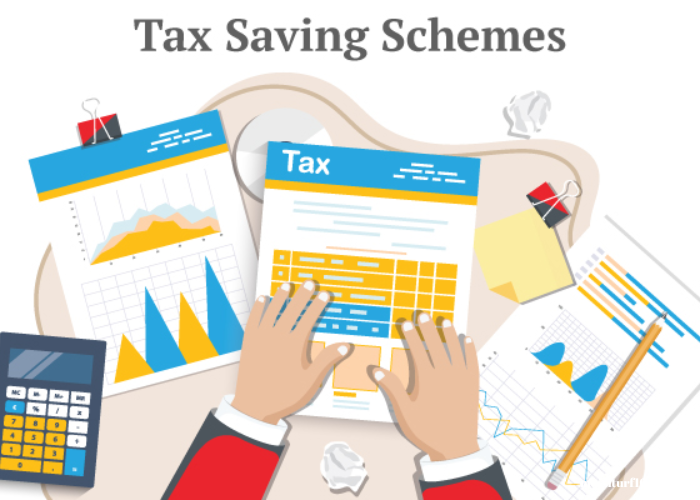Have you ever wondered how you can save taxes and secure your financial future at the same time? One such avenue is through tax-saving schemes under Section 80C of the Income Tax Act. In this article, we will focus on five popular tax-saving schemes in India that have stood the test of time and provide a range of benefits to individuals from all walks of life:
1. Public Provident Fund (PPF)
If you are a risk-averse investor looking for a safe and secure investment option with above-average returns and tax benefits, then the Public Provident Fund (PPF) is an excellent choice. PPF offers an ultra-safe option to reduce your tax liability while ensuring the safety of your principal amount. The current interest rate of 8.0% may be lower than before, but it still outperforms traditional bank fixed deposits. Additionally, PPF offers triple tax benefits – the investment qualifies for exemption under Section 80C, the interest accrued is tax-free, and redemption is also tax-free.
2. Equity Linked Savings Schemes (ELSS)
Equity Linked Savings Schemes (ELSS) combine the benefits of tax efficiency and wealth creation. These schemes primarily invest in equity and related instruments, which offer the potential for higher returns in the long run. ELSS enjoys Exempt-Exempt-Exempt (EEE) status, making it an attractive tax-saving option. Investors can start with as little as ₹500 and enjoy a lock-in period of just 3 years.
It is important to note that ELSS investments are subject to market risk and returns fluctuate based on equity market movements. However, if you have a long-term investment horizon, ELSS can be an excellent choice for both tax savings and wealth creation. By choosing the growth option, you can benefit from reinvestment over time, allowing your investment to grow further.
3. National Pension Scheme (NPS)
The National Pension Scheme (NPS) offers the opportunity to build a corpus for their retirement while availing of tax benefits. What sets NPS apart is the flexibility in selecting asset classes to invest in – equity, debt, or balanced funds. Depending on your risk appetite and financial goals, you can choose the most suitable asset class.
Let’s consider a scenario where Mr Kapoor wants to build a retirement corpus by investing ₹50,000 per year in the NPS Tier I account for 25 years. Assuming an average return of 8%, his accumulated corpus at retirement would be approximately ₹35 lakhs. Not only does Mr Kapoor enjoy tax benefits on his annual contributions under Section 80C, but he also receives regular annuity income after retirement.
4. Unit Linked Insurance Plan (ULIP)
Unit Linked Insurance Plans (ULIPs) offer a unique dual-purpose investment option that combines insurance coverage with wealth creation. Unlike traditional endowment plans, ULIPs provide policyholders with the flexibility to choose between debt, equity, or a mix of both as per their risk appetite and financial goals. ULIPs not only offer tax-saving benefits under Section 80C but also enjoy tax exemption on the maturity amount under Section 10(10D).
Let’s consider an example of how a ULIP can serve as a dual-purpose tool. Mr Verma wants to secure his family’s future while also growing his investment. He opts for a ULIP with a premium of ₹50,000 per year for 15 years. At the end of the tenure, he will have life insurance coverage and an investment corpus that has grown over time.
5. Term Insurance
While popular tax-saving schemes like PPF, ELSS, NPS, and ULIP provide various benefits, it is essential not to overlook the importance of term insurance in your financial planning. Term insurance offers pure life cover at an affordable premium, ensuring financial security for your loved ones in case of an unfortunate event.
Consider the scenario of Mr Singh, a 35-year-old earning member of his family who wants to ensure his family’s financial well-being in case of his untimely demise. He opts for a term insurance plan with a sum assured of ₹1 crore for a policy term of 30 years. By paying an annual premium of approximately ₹10,000, Mr Singh secures his family’s future with comprehensive life coverage.
Investing in term insurance provides peace of mind and ensures that your loved ones are financially protected even when you are not around. To understand how much term insurance coverage you need and calculate the premium based on your requirements, you can use the Term Insurance Calculator available online.
Conclusion
Tax-saving schemes in India not only offer the opportunity to save taxes but also provide a range of benefits such as long-term wealth creation, retirement planning, and life insurance coverage. Investing in schemes like PPF, ELSS, NPS, ULIPs, and term insurance, can secure your financial future while enjoying tax benefits.
As you plan your financial journey, remember to consider the unique features and benefits of each scheme and align them with your financial goals. Whether you are looking for long-term wealth creation or comprehensive life coverage, there is a tax-saving scheme that suits your needs.





